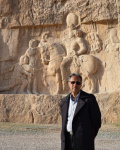| نویسندگان | Fereshteh Saki,Mohsen Javeri |
|---|---|
| نشریه | Parseh Journal of Archaeological Studies |
| شماره صفحات | ۱۱۹ |
| شماره مجلد | ۴ |
| نوع مقاله | Full Paper |
| تاریخ انتشار | 1399/09/10 |
| رتبه نشریه | علمی - پژوهشی |
| نوع نشریه | چاپی |
| کشور محل چاپ | ایران |
| نمایه نشریه | ISC |
چکیده مقاله
Vaqf (endowment) is one of the admirable Islamic traditions which have made the Muslims construct the buildings and different complexes based upon religious advises and also fair-minded of devotees such as kings and their relatives, ministers, politician, princes, merchants, and the other fair-minded people during the Islamic period. Most of these buildings still survived and lasted up to now. The nature of the devotion and its existence reasons not also was the cause of public utility constructions but also has guaranteed the preservation of those buildings and their urban zones. The Safavid period was one of the flourishing periods in terms of public utility constructions in the frame of devotion. This study aims to introduce the Aligholi complex and the influence of devoting traditions and its consequences on how it lasted from the construction till now. The base of this study is around educing devoting deed information of Aligholi Agha complex and benefitting from its contents and comparing the stated cases to the existing position and showing this point that how a building or complex-forming under the support of devoting system, and how devotee could guarantee the survival and durability of the complex after the construction.To influence the preservation of religious buildings and to regulate the urban zone around them, in this article we have studied the historical complex of Ali Qoli-Agha, which is an architectural masterpiece of Safavid era public buildings in Isfahan and formed within the framework of the endowment. In addition to regulating and forming the urban zone around it, this complex has also been the cause of its preservation and survival in the following periods. The Aligholi Agha historical complex is an architectural masterpiece of public utility in the Safavid period in Isfahan. This valuable historical complex has been built in the late Safavid period by the order and economical support of Aligholi Agha, who was one of the eunuchs in Shah Sultan Hussein Safavid’s court and then devoted to charity affairs. This historical complex included a mosque, bath, Bazar, Sagha Khane, Timche, Caravanserai, school, and Zoorkhane, which the three late places have ruined during the time.
